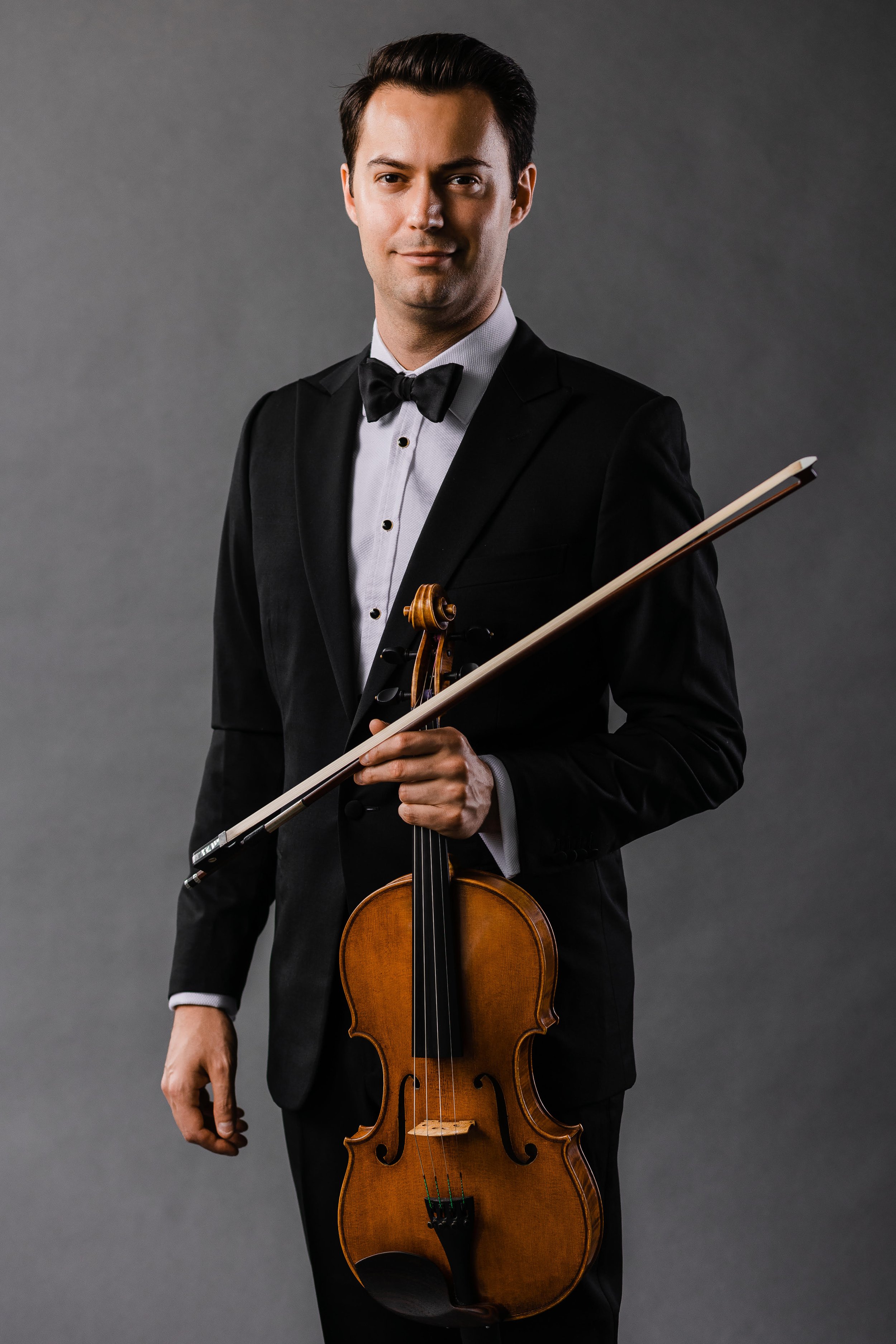Mendelssohn - String Symphony No. 3 in E minor, MWV N 3
Felix Mendelssohn’s String Symphony No. 3 in E minor is one of thirteen string symphonies the composer wrote in his youth, showcasing his prodigious talent and mastery of form and expression at an extraordinarily young age. Composed in 1821, when Mendelssohn was only 12 years old, the work reflects the influence of earlier composers such as Johann Sebastian Bach and Wolfgang Amadeus Mozart, yet also hints at the individuality and emotional depth that would characterize Mendelssohn’s later compositions..
Bruch - Romanze for Viola and Orchestra, Op. 85
Max Bruch’s Romanze for Viola and Orchestra, is a lyrical gem in the repertoire for the viola, showcasing the instrument’s expressive and singing qualities. Composed in 1911, when Bruch was in his seventies, the work reflects the Romantic aesthetic that defined his career, favoring lush melody and emotional warmth over the more modernist trends of the early 20th century. The Romanze is a single-movement work that unfolds in a serene and introspective character. The viola's rich, soulful voice is given full prominence, delivering a long-breathed, song-like melody that flows with effortless beauty. The orchestra provides a gentle, supportive accompaniment, weaving a warm and harmonious texture that enhances the soloist’s lines without overpowering them. Despite its modest length and simple structure, the Romanze achieves a profound emotional depth, capturing a mood of wistful nostalgia and tender intimacy. The choice of the viola as the solo instrument is particularly poignant, as its mellow timbre and expressive range align perfectly with the work’s introspective nature.
Hailstork - Two Romances
Composed in 1993, the Two Romances by American composer Adolphus Hailstork make a striking and eloquent work that showcases the composer’s rich melodic language and mastery of orchestration. Hailstork, known for his blending of classical traditions with African American cultural influences, here creates a deeply expressive and intimate musical experience, written for solo instrument (often viola or violin) and orchestra.
The work is divided into two contrasting movements, each a miniature exploration of the emotional depth and beauty inherent in its titular "romances." The first romance presents a lush, lyrical theme that speaks with a voice of melancholy and reflection. The soloist carries the melody with a singing quality, moving through gentle and intimate phrases, while the orchestra provides a rich, harmonic backdrop that supports but never overpowers the soloist. The second romance contrasts the first with a brighter, more optimistic character. This movement pulses with energy and joy, while still maintaining the emotional depth of the first. The soloist’s melodies are more playful and ornamented, and the orchestra responds with lively and buoyant textures, imbuing the work with a sense of warmth and hope.
American Violist Jeremy Kienbaum has been lauded for his “eloquent strength” (Well-Tempered Ear) and sound that “refracted like shards of light” (New York Times). He has made recent appearances with Love from Lincoln Center, Orpheus Chamber Orchestra, and at the Paax Festival in Mexico and the Lucerne Festival in Switzerland. He has been featured on the TODAY Show, Wisconsin Public Radio, Classical KING, and can be seen in the documentary “Itzhak,” chronicling the teaching of Itzhak Perlman. He has performed around the world at venues including Carnegie Hall, the Elbphilharmonie in Hamburg, the Paris and Berlin Philharmonies, and the Chan Centre in Vancouver, Canada. An avid chamber musician, Mr. Kienbaum has performed with renowned musicians including Carmit Zori, Alexander Fiterstein, and alongside members of the New York Philharmonic, Boston Symphony, and Berlin Philharmonic Orchestras (click here to continue reading).
Andrews - Till Voices Wakes Us
Winner of the 2024 LCO Call-for-Scores
If you venture outside in late April or early May near a pond in the eastern Massachusetts countryside, especially around dusk, you are likely to hear a remarkable chorus. It is produced by the eastern American toad. It consists of a series of long, high-pitched trills each of which can last up to twenty seconds: the note each animal produces is different but very consistent, resulting in a magical, otherworldly, multi-layered counterpoint. This sound-world was the starting point for Till voices wake us.
Lovers of T. S. Eliot’s The Love Song of J. Alfred Prufrock will doubtless recognise the near quotation of the last three lines:
We have lingered in the chambers of the sea
By sea-girls wreathed with seaweed red and brown
Till human voices wake us, and we drown.
For Eliot, the mermaids represent the world of the imagination, in contrast to the socially stifling life of 1920s London, and it seems to me that the drowning he refers to is not literal death, but being pulled back from our inner creative realms into the mundane world. Till voices wake us tries to inhabit this liminal space. Or, to use another Eliot near-quotation, it tries to depict “that place where three dreams cross.”
Stravinsky - Pulcinella Suite
This work marks Igor Stravinsky’s official start of his neo-classical period. Sergei Diaghilev, founder of the Ballets Russes, wanted to create a production around a musical libretto composed by Giovanni Baptista Pergolesi (now we know that it was written by other composers). The conductor Ernest Ansermet connected Diaghilev and Stravinsky. At first reluctant to agree to the project, Stravinsky studied the scores that Diaghilev chose, loved them, and set them up in his characteristically modern style. The suite from the ballet are eight selections out of the twenty-one from the full ballet.








